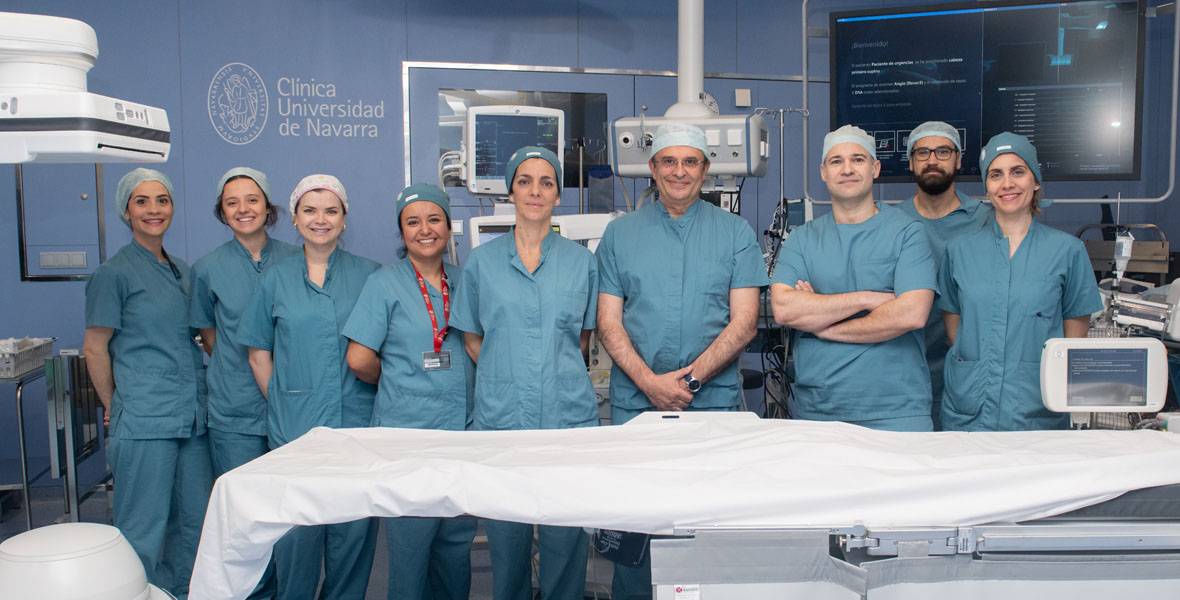Uterine artery embolization reduces the risk of postpartum hemorrhage and preserves the mother’s fertility.

Interventional radiology techniques can safely treat postpartum hemorrhage, reducing maternal mortality and comorbidities and ensuring the woman’s fertility.. This is what the University of Navarra Clinic team publishes in the journal scientific journal CVIR Endovascular which reveals the advantages of embolization, a minimally invasive procedure, compared to hysterectomy – removal of the uterus.
“Until now, the traditional operation has been hysterectomy, but it is associated with high morbidity and mortality for the mother and fetus. For this reason, clinical guidelines recommend it only in situations where there is no other option. Currently recommended alternatives are interventional radiology techniques, especially embolization, which allow selective closure of the uterine arteries to prevent continued bleeding.“explains Dr. Alberto Alonsospecialist at the Department of Vascular and Interventional Radiology at the University Hospital of Navarra and first author of the article.
These methods have been proven to be faster, safer and more effective. In addition, they help preserve the functionality of the uterus and, therefore, the woman’s fertility.. “Although bleeding after childbirth increases the risk of future pregnancies, embolization allows us to do what a hysterectomy would make impossible. That’s why, These innovative procedures allow women to have another pregnancy if they wish, although closer monitoring by gynecology and obstetrics is required to ensure the safety of mother and fetus.“, adds Dr. Laura Muñoz SahaHead of the Obstetrics Department of the Clinic of the University of Navarra in Madrid and contributor to this publication.
Monitoring and planning of labor is a key element to ensure timely treatment of possible bleeding with better results. “In the clinic, we have a multidisciplinary protocol that involves gynecology and obstetrics, interventional radiology, anesthesia, neonatal intensive care unit and pediatrics to resolve these cases using all available tools and immediate response 24 hours a day, 7 days a week.” , says the doctor. Alonso
Education and training
Postpartum hemorrhage is the most common cause of maternal death and can occur in 1–5% of births.. The most common primary hemorrhages occur during labor or in the first 24 hours, although they can occur in the next 12 weeks. This is a medical emergency that can initially be treated with medications and an intrauterine balloon, but may eventually require more aggressive measures such as uterine artery embolization or even surgery.
Although most occur unexpectedly, there are factors that increase the risk during pregnancy management. The most common are the age of the mother – when she is over 40 years old – multiple pregnancy, twin pregnancy, accumulation of amniotic fluid, hyperdistension of the uterus, a very large baby or a long term of birth.
“Postpartum hemorrhage is an emergency that requires the intervention of a multidisciplinary team trained to deal with such situations.. When faced with the birth of a child with risk factors, it is important to anticipate this so that if bleeding occurs, we take a quick and accurate approach, always multidisciplinary. Given the warning, together with a blood bank and an intensive care unit, an entire emergency care facility is being created to have blood products and all the necessary technical and human resources available in anticipation of complications,” says Dr. Muñoz Saha.